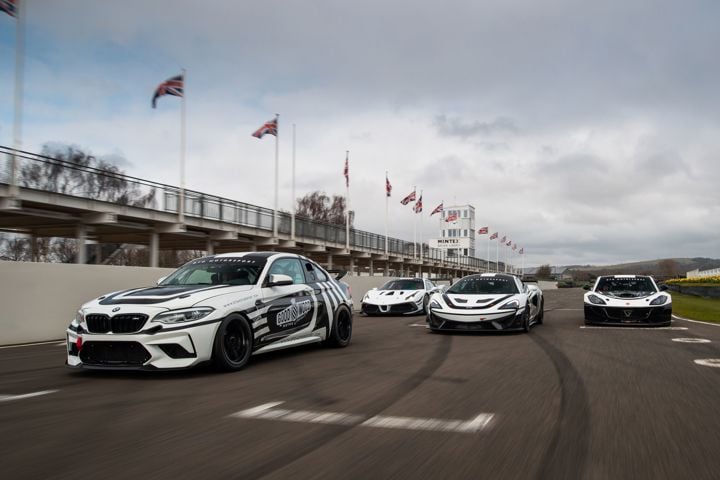The new McLaren 750S adds more power to the 720S recipe
The McLaren 720S successor is here, believe it or not. This is the McLaren 750S, in coupe and spider form and no, you’re not incorrect in your summation that this is a very closely-related derivation of the 720S it replaces. McLaren insists however that the cumulative result of a whole bunch of small to medium updates, means that 30 per cent of the parts in the 750S are new or changed. Let’s get into it, starting with the familiar looks.

Or are they? The silhouette, the lights, the glasshouse, the musculature – it’s all very similar. Where the 750S moves things on is in the details. For a start, that now body-coloured maw is a pretty dramatic change and actually goes some way to hiding the fact the splitter is now quite significantly bigger. It’s also wider at the front axle too, to the tune of around 6mm. They say the eye socket intakes are thinner, though side-by-side comparisons reveal little to the naked eye.
Around the side, we have a new selection of wheels and a revised larger lower intake ahead of the rear wheel. At the back meanwhile, we get a similar width-spanning vent treatment to the 765LT, with a single P1-inspired exhaust in the middle and a larger, more 765-esque extended active wing. The result is increased downforce and a better aerodynamic balance than the 720S and an ‘acoustically tuned’ soundtrack for a ‘sharp crescendo’ in high revs.
Aesthetically? It’s obviously all still very 720S, but sharpened up for 2023. That’s not to say the 720 was particularly outdated either, even though it debuted a full seven years ago now. In fact, we couldn’t think of a better place to start for a ‘new’ supercar that borrows rather a lot from its predecessor, given the 720S was still near-on a class leader in terms of its usability and driving experience. It would be a shame if we damned this as a derivative and forgot that.
So yes, it still features McLaren’s fabulous Proactive Chassis Control hydraulically-linked suspension system, now in its latest third generation. The 750S is stiffer at the rear and softer up front, with the commensurate tuning of PCCIII resulting in what McLaren says is a better ride, better body control, better steering and overall better cornering. There’s also an updated lift system that can raise the car in four seconds, over twice as fast as the ten seconds the 720S took. Convenient.
There’s a new ‘track’ option for the brakes, which basically borrow the ceramic discs and monobloc callipers seen on the Senna and 765LT. The beloved hydraulic steering rack has also been sharpened and has a new pump.
In a market now dominated by the hybridised Ferrari 296 GTB, McLaren has been wise to highlight just how lightweight the 750S remains by comparison. At just 1,277kg in its lightest configuration, McLaren reckons it’s a full 193kg lighter than ‘its closest competitor’ and 30kg down on the 720S it replaces, with new lightweight seats, forged wheels, lighter suspension components and more contributing.
Where the 720S needed the biggest update was in the interior, not necessarily in its layout or design, but its technology. Happily, the 750S features new displays, with a new column-mounted instrument display a-la the Artura. The new infotainment display is also sharper, responsive to touch inputs and features Apple CarPlay integration. There’s also a new interface for the dynamics called the McLaren Control Launcher, or MCL, which allows the driver to store personalised settings for the various adaptive parameters, such as aero, handling, powertrain and transmission. In effect, this is McLaren’s ‘M button’.
As this is a car very closely related to the 720S, you can expect the numbers to be fairly spectacular. The 4.0-litre V8 is bumped in power and torque to 750PS (552kW) and 800Nm (590lb ft), with revs limited to a healthy 8,500rpm. The seven-speed dual-clutch also features 765LT-esque revised ratios, for even more savage acceleration. That results in a 2.8-second 0-62mph run, on the way to 124mph in 7.2 seconds and 186mph in under 20. The top speed is 206mph.
So what’s the result? Should you spend your money on what is an old car made new? Given how good that old car is and how good we know McLaren is at making incremental changes that yield excellent results, yes. That being said, with the hybrid V6 Artura and indeed, hybridised rivals of the 750S in mind, can you help but wonder what time it has and what’s to follow? Is the 750S McLaren’s ‘F8 Tributo’ stop gap moment? We’d be inclined to turn that upside down and say that like the F8, this is an unexpected last hurrah for an incredible twin-turbo V8 supercar, that could be on its best form yet.
McLaren
750S















